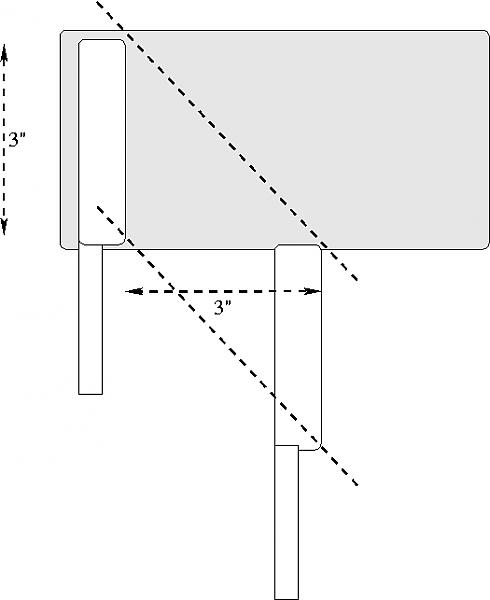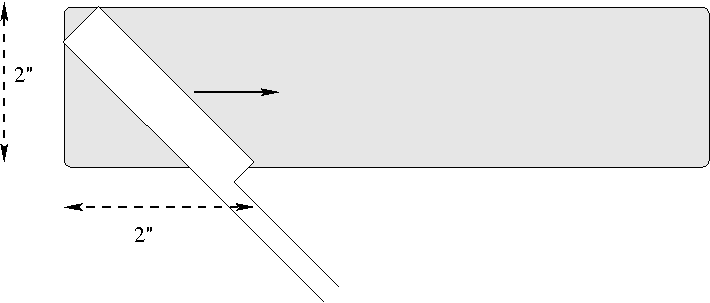Results 11 to 20 of 26
Thread: X-Pattern, why?
-
07-27-2008, 05:56 PM #11Senior Member

- Join Date
- Sep 2007
- Posts
- 711
Thanked: 22
I do not use the X pattern, because when I tried, and was watching, the heel was spending like 100th of a second on the hone, whilst the rest of the blade spent some time on the hone. I got the image of those razors you see with the toe 4/8, the center 5/8 and the heel still original 6/8. I do believe some fellow members tried to explain something about that, yet it still made no sense to me, therefore I choose to avoid it.
I guess its like most things, when at first there seems like only 1 way to do something, it becomes the accepted standard.
-
07-27-2008, 06:17 PM #12

I thought that's why hones have corners- so you can use the stone to cut where you need to cut regardless of wide or narrow. You should balance where the edge is abraded to get to or maintain the shape you want
-
07-27-2008, 06:17 PM #13Senior Member

- Join Date
- Apr 2008
- Location
- Wales UK
- Posts
- 1,087
Thanked: 84
I've got a W&B and a Wards and Co exactly like this. I have been trying alternate honning to sort it out. It is working on the W&B, the heel is slowly getting in line.
-
07-27-2008, 06:26 PM #14
 hmmm
hmmm
i think im supposed to be walking away with the idea that no one way is the best way... but that a variety of methods can be employeed to get the best out of a variety of situations. I just wondered if there was a deffinate answer.. I don't have a problem with doing it, i just got to wondering what the rational was.
this input is interesting, thanks!
-
07-27-2008, 06:43 PM #15

That's why I asked Howard (wasn't it?)when he mentioned he was making a video with Hap if they were dealing with the problems that arise when honing and repairing damage rather than just another plain old vid for beginners.
-
07-27-2008, 06:46 PM #16

This is the key point here. Although, if you only have one razor and touch it up for years and years in an X-pattern you'll run into the same problems in the end

@marklar: your post pretty much sums it up. There is no "perfect" way to hone a razor, each one is different. But you've got to think about what you're doing and that is the key!
-
07-27-2008, 06:58 PM #17
-
07-27-2008, 06:59 PM #18

No, this is not the case. The hone coarseness is irrelevant - it just speeds things up.
There are at least two variables that determine how fast the steel is removed
(1) the time a particular point of the razors spends in contact with the hone
(2) the pressure (yes there is always a contact pressure otherwise there will be no change to the metal)
Interestingly enough if the blade is straight and the spine is even the edge naturally comes out straight even when you use narrower hone, as long as the whole edge gets in contact with the hone. If one section of the razor gets narrower the pressure on the other sections is slightly larger and it wears off faster so at the end it evens out.
If your hone is long enough you can angle the razor and have the whole edge be in contact with the stone as in the following images:


The barber's manual shows that honing at an angle to the edge is important for creating striations. This is critical if finishing on a relatively coarse stone, and less important if using extremely fine stones.
-
07-27-2008, 07:01 PM #19

For what it's worth, this barber text sums it up in pretty concise terms (pg. 24) and gives an easy cure for the potential problem (of smile vs. frown).
Even on wide hones, I just get better results with an X-pattern; so that's what I always use. I think it handles smiling and slightly warped edges better maybe (or perhaps I get better results out of long familiarity).Last edited by Sticky; 07-27-2008 at 07:08 PM.
-
The Following User Says Thank You to Sticky For This Useful Post:
JimmyHAD (07-28-2008)
-
07-27-2008, 07:03 PM #20


 LinkBack URL
LinkBack URL About LinkBacks
About LinkBacks






 Reply With Quote
Reply With Quote
 Certainly not unless you are dwelling on the very low grit hones. If you are spending a lot of time in the coticule zone I doubt you'll do too much damage no mattter what you do.
Certainly not unless you are dwelling on the very low grit hones. If you are spending a lot of time in the coticule zone I doubt you'll do too much damage no mattter what you do.

